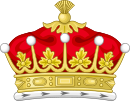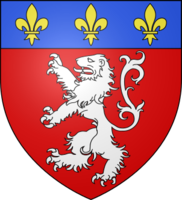WOW!! WHAT A RIDE! I had no idea what was opening up to me. There are so many links, ties and revelations in this post it is not even funny. I hope you get to see it before tomorrow’s CORONATION. No matter if you do or not, whenever you view what is posted here you will get an eyeful!!
We are at the very end of this world as we know it. REVELATION is pouring out on us at an amazing rate. We are such a blessed generation to see all things unfurled and revealed. To witness the POWER of our GOD. What an exciting time to be alive! HAVE NO FEAR for GOD IS IN CONTROL!
DO NOT BELIEVER FOR ONE MINUTE THAT THE CORONATION IS A CHRISTIAN CEREMONY!! DO NOT SWEAR AN OATH! NOT TO CHARLES, NOT TO THE MONARCHY, NOT TO ANYONE. DO NOT SWEAR!! DO NOT TAKE IT LIGHTLY. AN OATH IS BINDING!
spacer
UPDATE: Added 5/14/23
Lord Mayor Nicholas Lyons
:max_bytes(150000):strip_icc():focal(749x0:751x2):format(webp)/lord-mayor-of-london-coronation-robe-050423-1-bf3fd5310046406b80bc58d82896c74c.jpg)
Lord Mayor Nicholas Lyons will attend the coronation wearing a piece of history — the robe which was worn by Lord Mayor Sir Rupert de la Bere during Queen Elizabeth‘s coronation.
“As we prepare for the #Coronation, I look forward to wearing this splendid red velvet robe which was worn by my predecessor to Queen Elizabeth II’s coronation in 1953. Kindly lent by the Skinners’ Company,” he wrote on Twitter.
spacer
spacer

Published: May 2, 2023 7.20am EDT
Though images of crowns are often used in royal branding, it is rare for monarchs these days to actually wear crowns. In the western monarchical tradition, the British monarchy is an exception, with kings and queens undergoing a crowning ceremony.
In the UK the crown encompasses both the monarch and the government, namely King Charles III and His Majesty’s government. The title of the Netflix drama “The Crown” has made this association clear even to international audiences unfamiliar with British constitutional principles.
The reign of late Queen Elizabeth II was represented by a stylised image of St Edward’s Crown. King Charles III’s reign is represented by an image of the Tudor Crown, which appears in the king’s royal cypher, coat of arms and the invitations for the coronation. In time, it will be seen on state documents, military uniforms, passports and post boxes throughout the UK and the 14 realms where he is head of state.
|
The Tudor Crown, also known as Henry VIII’s Crown, was the imperial and state crown of English monarchs from around the time of Henry VIII until it was destroyed during the Civil War in 1649.Wikipedia
|
Although the European monarchies of Belgium, Denmark, The Netherlands, Luxembourg, Norway, Spain, Sweden and the Vatican, are known as “crowned heads of state”, they forswear coronations and eschew the wearing of crowns. Still, they all use a crown as the marque (or emblem) to represent themselves – see Luxembourg and Denmark’s coats of arms.
Crowns of the coronation
The coronation of King Charles III will be a veritable festival of crowns, featuring seven crowns in total. The king will be crowned with St Edward’s crown by the Archbishop of Canterbury, and he wears this crown once. But during his exit from Westminster Abbey, he will wear the lighter Imperial State Crown. Queen Camilla will also be crowned with Queen Mary’s crown. The last queen consort to undergo a coronation was in 1937.
Four other crowns will be present during the coronation, worn by the kings of arms – senior officers who regulate heraldry (coats of arms) in the UK and participate in major ceremonial occasions.
The three kings of arms from England’s College of Arms will wear crowns decorated with acanthus leaves and engraved with the words of Psalm 50, Miserere mei Deus secundum magnam misericordiam tuam – “Have mercy on me, O God.” Scotland’s king of arms from the Court of the Lord Lyon will wear a crown which is a facsimile of the Scottish royal crown. Heraldry can be viewed as an early form of branding. Many UK universities, for example, have a coat of arms as their visual identity.
An eighth crown – the actual Scottish crown and one of the oldest in Europe – will not be at the coronation, but will be presented to the king at a special service later in the year.
spacer’
The King and Queen Consort will be honoured in a special Scottish service later this year following the coronation in May.
Charles will be presented with the Honours of Scotland during the service of dedication and thanksgiving at St Giles’ Cathedral.
The Honours of Scotland, which are on display in the Crown Room at Edinburgh Castle, are the oldest crown jewels in Britain.
They will be escorted from Edinburgh Castle to the cathedral by a people’s procession of about 100 representatives from across Scotland.
Prior to the Scottish service, First Minister Humza Yousaf will travel to London to attend the coronation at Westminster Abbey on Saturday May 6.

“The Honours of Scotland, including the Stone of Destiny, will form part of the ceremony at St Giles’ Cathedral and the event will be similar to the thanksgiving service held in 1953 during the late Queen’s first visit to Scotland following her coronation.”
Large screens showing the coronation will also be set up across Scotland, including in Princes Street Gardens in Edinburgh and Glasgow Cathedral.
Further details of the service and processions taking place later in the year, including viewing opportunities for the pubic, will be issued in the coming weeks.
spacerspacer
Just because they talk about god and the Holy Spirit, and use symbols like a cross and a dove, does not mean that they are believers in the Bible and worshipper of the True and Living GOD Creator of ALL Things. When they talk about the Virgin Mary as the Mother of god – they are talking about the Mother goddess of Pagan cults, not Mary the vessel GOD used to bring Christ into this world. Those who venerate humans as saints and dedicate churches to them, hold their relics sacred and pray to them, are worshipping pagan god, fallen angels and demons.
spacer
Lord Lyon King of Arms

The Right Honourable the Lord Lyon King of Arms, the head of Lyon Court, is the most junior of the Great Officers of State in Scotland and is the Scottish official with responsibility for regulating heraldry in that country, issuing new grants of arms, and serving as the judge of the Court of the Lord Lyon, the oldest heraldic court in the world that is still in daily operation.
The historic title of the post was the High Sennachie (Sennachie definition, a professional storyteller of family genealogy, history, and legend. ), and he was given the title of Lord Lyon from the lion in the coat of arms of Scotland.[1][2]
The post was in the early nineteenth century held by an important nobleman, the Earl of Kinnoull, whose functions were in practice carried out by the Lyon-Depute. The practice of appointing Lyon-Deputes, however, ceased in 1866.
Responsibilities
The Lord Lyon is responsible for overseeing state ceremonial in Scotland, for the granting of new arms to persons or organisations, and for confirming proven pedigrees and claims to existing arms as well as recognising clan chiefs after due diligence. He also registers and records new clan tartans, upon request from the clan chief. The Lyon Register (officially the Public Register of All Arms and Bearings in Scotland), on which the Lord Lyon records all Scotland’s coats of arms, dates from 1672.[3]
As Lyon Court is a government department, fees paid for granting coats of arms are paid to the Treasury. The misuse of arms is a criminal offence in Scotland, and treated as tax evasion. Prosecutions are brought before Lyon Court, Lord Lyon being the sole judge. Appeals from the Lyon Court can be made to the Court of Session in Edinburgh. There is no appeal if the Lord Lyon refuses to grant a coat of arms, as this is not a judicial function, but an exercise of his ministerial function, although an appeal by way of judicial review may succeed if it can be shown that the Lord Lyon acted unreasonably.[citation needed]
Equivalents

- Being responsible for Scottish state ceremonies he parallels the Earl Marshal in England.
- The Lord Lyon is the heraldic authority for Scotland, much as the English Kings of Arms are responsible for granting arms in England. England has three “Kings of Arms”, or high heraldic officers (Lord Lyon is Scotland’s only one): Garter Principal, Clarenceux (responsible for southern England), and Norroy and Ulster (responsible for northern England and Northern Ireland). Unlike the English Kings of Arms, who cannot grant arms without a warrant from the (English) Earl Marshal, Lyon does not need permission, but grants by his own power.
- Whilst in England the Court of Chivalry (which last met in 1954) is a civil court, in Scotland the Lyon Court meets often and has criminal jurisdiction. Lord Lyon is empowered to have assumed coats of arms, and whatever they are affixed to, destroyed. As an example, when Leith Town Hall, now used as a police station, was renovated during the 1990s, several of the coats of arms decorating the Council Chamber were found to be attributed to the wrong person. The police were given special permission to retain the display, on condition that the tourist guides pointed out the historical anomalies.
The Lord Lyon is also one of the few individuals in Scotland officially permitted to fly the “Lion Rampant”, the Royal Banner of Scotland.[4]
The Standard of the Duke of Rothesay, viz the Royal Banner of Scotland defaced with a plain label of three points Azure.

spacer
Royal Coat of Arms of the United Kingdom (Scotland)

Nemo me impune lacessit ( No one provokes me with impunity)
Symbols of office
A new collar of state was made in 1998 – a chain with 40 gold links, replacing the item that went missing after the Battle of Culloden.[5] In 2003 a new crown was made for the Lord Lyon, modelled on the Scottish royal crown among the Honours of Scotland.[6] This crown has removable arches (like one of the late Queen Mother‘s crowns) which will be removed at coronations to avoid any hint of lèse majesté.[7]

Bowing to tradition: Scotland’s Lord Lyon to wear £10,000 crown at coronation. Two decades ago almost £10,000 was spent making a glittering new crown for Scotland’s chief herald without knowing when it might be seen in action.Apr 23, 2023
spacer
Lord Lyon gets his crown back
 THE crown worn by the Lord Lyon at coronation ceremonies has been recreated.
THE crown worn by the Lord Lyon at coronation ceremonies has been recreated.
It was commissioned by the Heraldry Society of Scotland at a cost of almost 10,000.
The design, by Nicola Williams, is based on the traditional Scottish crown, which was last seen in the 17th century and whose whereabouts are unknown. It is a combination of the traditional with what she describes as a “contemporary take”.
Each stage of the design concept was overseen by both the Heraldry Society of Scotland and the Lord Lyon.
The crown was fashioned by Edinburgh jeweller Hamilton and Inches. The project, from the cutting of a thick strip of solid silver bullion to the final gilding, took almost five months to complete.
Romulus Squire, chairman of the Heraldry Society of Scotland, and Robin Blair, the Lord Lyon, met with the Queen in private last week to present the crown for her approval. Squire said: “She seemed very pleased with the finished article.”
The crown will be displayed by Hamilton and Inches at its George Street premises from August 1 and for the duration of the Edinburgh Festival.
Robin Blair, the 35th Lord Lyon, is a retired partner of the Edinburgh law firm, Dundas and Wilson. He now holds court from his office at East Register House in Edinburgh.
The title, Lord Lyon – King of Arms, stems from an ancient tradition of sovereign appointment. The appointee is responsible for “granting armorial bearing of the recognition of clan chiefs”. The Lord Lyon, who has his own procurator fiscal, investigates abuses of heraldic law.
Car manufacturer Porsche was consulted by the Lord Lyon in the 1990s with regard to its distinctive shield design motif being displayed in Scotland
.spacer
Crown of Lord Lyon

It was very interesting to read in the Times that Lord Lyon King-of-Arms, the senior heraldic officer in Scotland will not only take part in King Charles’ coronation on May 6 but will do so wearing the crown that had been commissioned and obtained by the Heraldry Society of Scotland back in the early 2000s. The arches on the crown, which are removable, will be removed for the coronation so it won’t too closely resemble the crown with which the King shall be crowned.
The expensive item and the trouble that went into commissioning and fabricating it was one of the reasons that, despite the Peers not being allowed to wear their coronets at the upcoming, more modernized, ceremony Lord Lyon–and indeed the other three English Kings-of-Arms–will be wearing their crowns. The coronation of the Sovereign is one of the only occasions on which these crowns are traditionally worn.

Islay Herald of Arms in Extraordinary (Scotland)
This Scottish title is from a noble title. Wagner and London dates this title to 1494. It is a currently available title at the Lyon Court. According to Franklyn & Tanner, a title from the Lyon office, in abeyance since the mid 19th century. This is probably the same as Isle Herald, and is presumably derived from the title of the Lord of the Isles.
I decided to include this coat of arms not only because it is related to the Lyon Court, but becaue of the symbolism. Vikings, very large fish, fleur de lies.
spacer
spacer
spacer
 The distinguished surname Lyon is a proud example of one of the more noteworthy Scottish surnames. In Scotland, hereditary surnames were adopted according to fairly general rules and during the late Middle Ages, names that were derived from localities became increasingly widespread. Local names originally denoted the proprietorship of the village or estate. The Lyon family originally lived in the Norman settlement of Lyons-la-Foret, before migrating to England and Scotland. [1]
The distinguished surname Lyon is a proud example of one of the more noteworthy Scottish surnames. In Scotland, hereditary surnames were adopted according to fairly general rules and during the late Middle Ages, names that were derived from localities became increasingly widespread. Local names originally denoted the proprietorship of the village or estate. The Lyon family originally lived in the Norman settlement of Lyons-la-Foret, before migrating to England and Scotland. [1]
|
Lyons-la-Forêt – lyons-la-foret.fr
Lyons-la-Forêt is a commune of the Eure department,
Normandy, in northwest France. Lyons-la-Forêt has distinctive historical geography, and architecture, and contemporary culture, as a consequence of the Forest of Lyons, and its bocage, and of the adjacent Pays de Bray.Wikipedia Country:France
Arrondissement:Les Andelys
Canton:Romilly-sur-Andelle
|
|
Lyons-la-Forêt – Normandy Tourism, France |
|
What to do in Lyons-la-Foret, Normandy – The Good Life France |
spacer
“Ingelram de Lions came to England 1066, and held Corsham and Culington from the King. He had Ranulph, whose brother William de Lions had a grant in Norfolk from Earl Walter Giffard, and left descendants there.” [1]
Moving north into Scotland, “John de Lyon obtained from David II a grant of the baronies of Forteviot and Fergundeny in Perthshire and Drumgawan in Aberdeenshire; his son, Sir John Lyon, was Secretary to Robert II, whose youngest daughter, Lady Jane Stewart, he married, and was created Lord Glamis, made Great Chamberlain, and Lord Chancellor of Scotland, and received grants of the Thanedom of Glamis in Forfarshire, and of the Barony of Kinghorn in Fifeshire. ” [3]
spacer
Lyon / Lyons Family Tree Home
The Lyon(s) Families Association was founded in 1949 by Howard C. Lyon.
We are a non-profit organization devoted to research and compilation of Lyon(s) families records. For more than 70 years the LFA has been dedicated to the same unwavering principles:
To collect, assemble and distribute the best available Lyon(s) genealogy information
To serve as a worldwide forum for researchers
To collect family histories and anecdotes to round out our database
To foster family unity and pride in the family name

The home of the Lyon family since the 14th Century.
glamour (n.)
NO3846 : The Strathmore Arms
taken 11 years ago, near to Glamis, Angus, Scotland
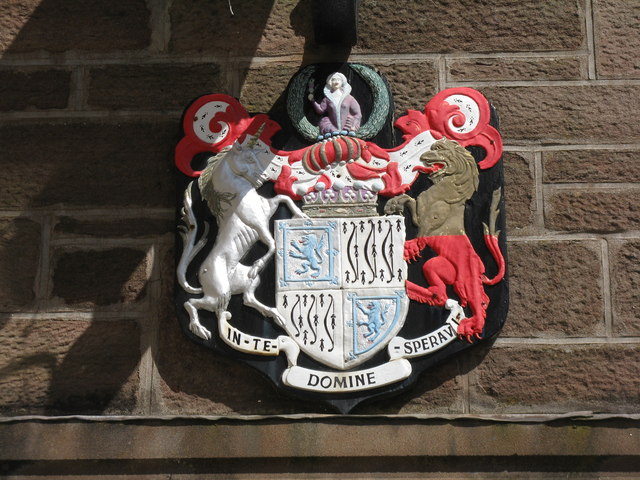
Earl of Strathmore and Kinghorne
Earl of Strathmore and Kinghorne is a title in the Peerage of Scotland and the Peerage of the United Kingdom. It was first created as Earl of Kinghorne in the Peerage of Scotland in 1606 for Patrick Lyon. In 1677, the designation of the earldom changed to “Strathmore and Kinghorne”. A second earldom was bestowed on the 14th Earl in the Peerage of the United Kingdom in 1937, leading to him being titled as the 14th and 1st Earl of Strathmore and Kinghorne.
Aside from the earldoms, the Earl holds the subsidiary titles: Viscount Lyon (created 1677), Lord Glamis, Tannadyce, Sidlaw and Strathdichtie (1677), Lord Lyon and Glamis (1606), Lord Glamis (1445) and Baron Bowes (1887) of Streatlam Castle, in the County of Durham, and of Lunedale, in the County of York. An earlier creation of Baron Bowes (1815), in favour of the 10th Earl became extinct on his death in 1821. The first three are in the Peerage of Scotland; the last two in the Peerage of the United Kingdom. The eldest son of the earl uses Lord Glamis as a courtesy title. Normally, the highest subsidiary title (in this case Viscount Lyon) would be used, but Lord Glamis is used instead to prevent confusion with the officer of arms, Lord Lyon King of Arms.[1] The earl is also Chief of Clan Lyon.
Queen Elizabeth The Queen Mother (1900–2002) was the daughter of the 14th Earl of Strathmore and Kinghorne, and the sister of the 15th Earl.
The family seat is Glamis Castle, in Angus, Scotland. Other family seats were Gibside, near Burnopfield, County Durham and Streatlam Castle, near Barnard Castle in County Durham. The traditional burial place of the Earls of Strathmore and Kinghorne is in an aisle of Glamis parish church.[2]
History
The established history of Clan Lyon states that the family is of French origin, with the original name de Leonne, but James Balfour Paul, in his Scots Peerage, states that the family is likely of Celtic origin. The family’s earliest recorded possessions, the thanages of Glamis, Glamis, Tannadyce and Belhelvies, were in a Celtic stronghold, while government positions held by family chiefs would have required fluency in Gaelic.[3]
The first recorded family member, John Lyon, Lord of Glamis, was a courtier and diplomat, who was appointed Keeper of the Privy Seal in 1371 on the accession of Robert II. He acquired significant lands, and on 18 March 1372, Robert II granted him “the free barony of Glamuyss in the sheriffdom of Forfar.” Glamis has remained the seat of the family ever since.[3]
spacer
The Dark Secret Behind the Hidden Room of Glamis Castle
If you could even guess the nature of this castle’s secret, said Claude Bowes-Lyon, 13th Earl of Strathmore, you would get down on your knees and thank God it was not yours.
Glamis Castle, one of the most haunted castles in Great Britain, was the talk of ancient Europe during the second half of the 19th century. The castle was connected with tales involving secret passages, hidden prisoners, initiation rites, and shadowy figures seen on the ramparts late at night.
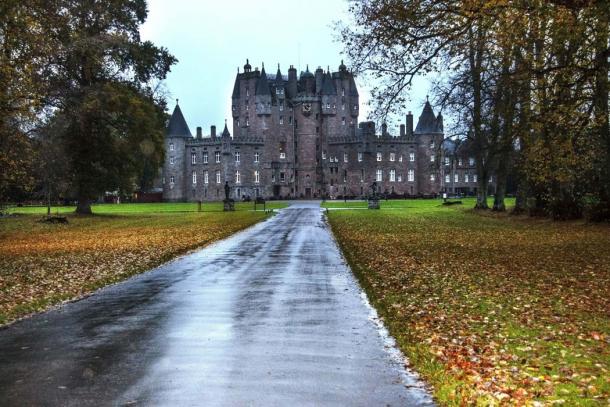
The secret was apparently so extraordinary that only three people were ever allowed to know it at one time: The Earl, the Earl’s heir (after he reached his 21st birthday), and the estate manager, known as a factor. Stories abounded over just what the Earls’ secret could be. According to legend, the heir of the 13th Earl of Strathmore flatly refused to participate in the initiation rite that would have informed him of the castle’s dark history. Many suspect that the mystery died with the 14th Earl; however, visitors cannot deny the chilling atmosphere felt in the Castle, especially in the lonely hours past midnight.
“I must own,” wrote Sir Walter Scott of his 1790 overnight visit to the castle, “as I heard door after door shut, after my conductor had retired, I began to consider myself as too far from the living and somewhat too near to the dead.”
Haunted Glamis Castle/Ghost Voices/Echovox ^ EVP
Glamis Castle and it’s Connections to the Earl of Strathmore and Macbeth
Glamis Castle was not just any principality. It was the seat of the Earl of Strathmore, a title still currently held by the Bowes-Lyon family – the maternal kinfolk of Queen Elizabeth II. The Queen Mother, Lady Elizabeth Bowes-Lyon, was the daughter of the 14th Earl of Strathmore.
Tragedy has always lingered in Glamis, even before the Victorian Era secret emerged. Famously, King Malcolm II was murdered at the Castle (then a Royal Hunting Lodge) in 1034. In Shakespeare’s Macbeth (written in 1606), the ill-fated protagonist lives in Glamis Castle, although the historical King Macbeth had no connection with the site.
- A Peek into The Paranormal Activity at Haunted Castles in Romania
- The Dramatic and Bloody History of Nottingham Castle
- Donegal Castle: Home of the O’Donnell Clan, Fort of the Foreigner, Captivating Gaelic Castle
The castle came into the possession of the Lyon family (later the Bowes-Lyons) in 1376. The first ghost that was said to haunt the castle corridors was that of Lady Janet Douglas. Caught up in regional politics, Lady Janet was accused of poisoning her husband (the 6th Lord of Glamis) and ultimately was convicted of witchcraft in 1537. She was burned at the stake in Edinburgh. The spirit of Lady Janet is said to favor the castle’s clock tower.

Glamis Castle’s Legendary Secret Chamber and its ‘Monster’
Yet the most famous legend of Glamis Castle is that of an unknown prisoner held in a secret hidden chamber . According to a correspondent to the journal Notes & Queries, writing in 1908,
“The mystery was told to the present writer some 60 years ago, when he was a boy, and it made a great impression on him. The story was, and is, that in the Castle of Glamis is a secret chamber. In this chamber is confined a monster, who is the rightful heir to the title and property, but who is so unpresentable that it is necessary to keep him out of sight and out of possession” (Dash, 2012).
The Monster of Glamis has been described as deformed, hairy, ‘a human toad,’ and always terrifying to behold. “A monster was born into the family. He was the heir—a creature fearful to behold. It was impossible to allow this deformed caricature of humanity to be seen—even by their friends.… His chest an enormous barrel, hairy as a doormat, his head ran straight into his shoulders and his arms and legs were toy like” (Dash, 2012).
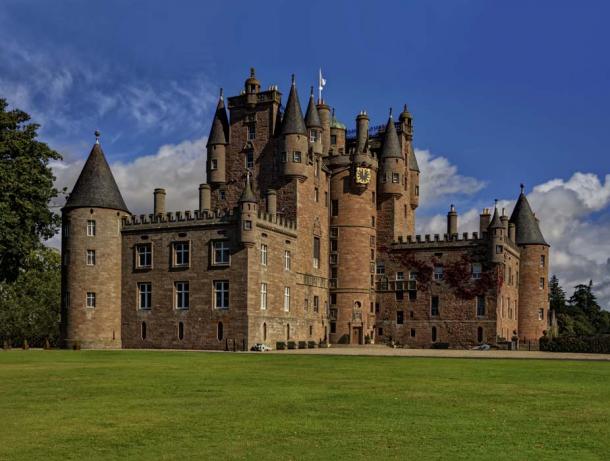
Sightings of the Eerie Figure at Glamis Castle
Some witnesses claim to have seen the strange creature’s shadow as he prowled the battlements late at night. One story tells how a castle workman unexpectedly found a door that led to a long, unfamiliar passageway. Walking along in eerie silence, the man is said to have seen ‘something’ at the far end of the passage. He fled and immediately reported his encounter to the factor. He was promptly encouraged by both the Earl and the factor “to emigrate to Australia, his passage paid by an anxious Earl” (Dash, 2012).
- Radzyn Chelminski: The Captivating History of a Castle of the Teutonic Order
- Malbork Castle: Searching for Treasure and Legends in the Shadows of the Teutonic Order
- Predjama Castle: The Castle in a Cave that Housed a Slovenian Robin Hood
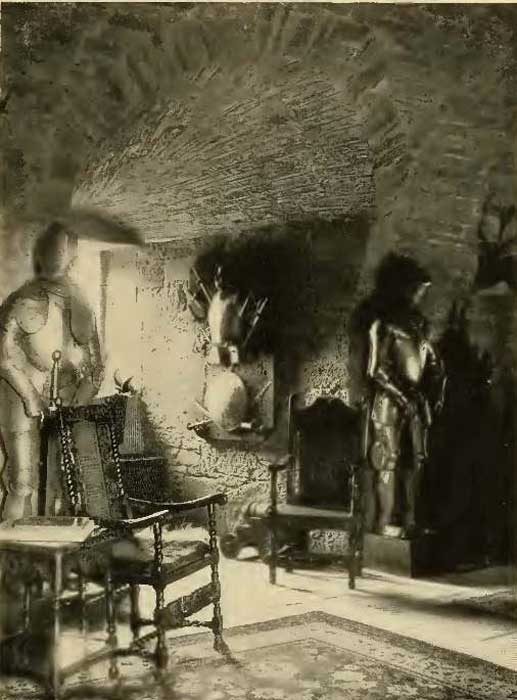
A corner of the Crypt at Glamis Castle. ( electricscotland.com)
If there is any agreed theory as to the origins of the ‘Monster’, it is that he was the first-born son of the 11th Earl Thomas Bowes-Lyon and his wife Charlotte Bowes-Lyon. According to contemporary records, the first child was “a son, born and died 21 October 1821.”
But what if he did not die? What if the unfortunate baby was born with deformities that were so severe his parents faked his death and hid him away? The real facts may never be known, but what is sure is that something very dark occurred in the old castle of Glamis.
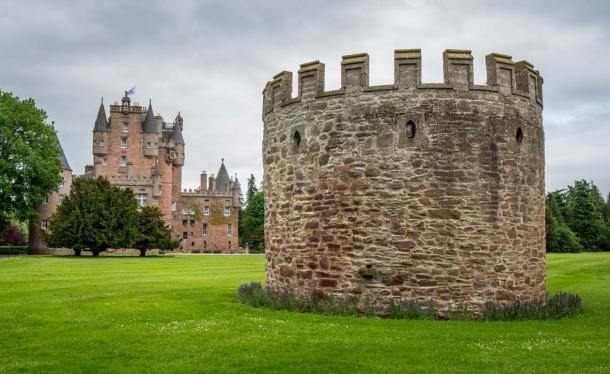
Glamis Castle, Angus, Scotland. ( ejesposito /Adobe Stock)
Top Image: Glamis Castle. Source: Lato-Pictures /Adobe Stock
spacer
|
Lu: Name Meaning |
Lyons
spacer
Lyon | History, Population, Map, & Facts | Britannica
spacer
spacer
History of Lyon, a happening place
From Lugdunum to Lyon: 2000 Years of History

Banks of the Saone River Frederic Crouzet/TIL
Previously known as industrial, foggy, prudent and bourgeois, Lyon is especially infamous with European motorists for its traffic jams in the tunnel that passes beneath Fourvière.
But Lyon has shed its skin these past 20 years and now become an attractive, cool and alluring city, recently voted “Best place to spend a weekend” in the 2016 World Travel Awards. The award comes as compensation for the years of effort spent promoting the city in the wake of its historic neighborhoods being classified as a Unesco World Heritage Site in 1998.
Strolling around Lyon is like turning the pages of a great history book, as you discover a unique landscape with an atmosphere both Latin and Nordic.
Climb to the heights of La Croix Rousse to the north or Fourvière in the west and take in the panoramic view of the city with 2000 years of history. From up high, admire the Italian-inspired roofs of the Renaissance quarter and the vast Place Bellecour, one of the largest public spaces in Europe.
|
La Croix-Rousse is a hill 254 metres high in the city of Lyon, France, as well as the name of a neighborhood located on this hill. The neighborhood is divided into les pentes and le plateau. This zone is served by Metro line C.Wikipedia
spacer The name “La Croix-Rousse” (‘the russet/red cross’) comes from a reddish-brown stone cross erected there in the 16th century. In Lyon, La Croix-Rousse is nicknamed la colline qui travaille (‘the hill that works’) in contrast to the better-known hill to the southwest, Fourvière, which is known as la colline qui prie (‘the hill that prays’). History
spacer Ode To Croix-Rousse, Lyon’s Bohemian Silk-Weaving Hill The Rose Cross: History and Symbolism – Symbol Sage |
On a clear day you can even make out the Alps and Mont Blanc in the distance. Bridges straddle the Rhône and Saone rivers, bordering the colorful building facades and grand shopping streets of the “Presqu’ile.”
Descend from the heights by way of narrow streets or take a “traboule”, a secret passageway, through the buildings of the “Canuts,” the silk workers of the 19th century. Live free by working or die fighting.
(I bet you were always told that silk only came from China!)
|
Canuts Lyonnais – La Croix-Rousse silk-weavers – Travel France Online |
|
Canut – Wikipedia |
|
Canut revolts – Wikipedia In 1831, the production of silk goods in Lyon was still organised in a manner similar to that of the pre-industrial era: At the top of the socio-economic pyramid was the grande fabrique (literally great manufacture), a group of about 1,400 bankers and traders named fabricants (manufacturers) or soyeux (silk workers), who controlled and financed the manufacture and commercialisation of the good The First Canut revolt in 1831 was provoked by a bad economy and a resultant drop in silk prices, which caused a drop in workers’ wages. In an effort to maintain their standard of living, the workers tried to see a minimum price imposed on silk. The refusal of the manufacturers to pay this price infuriated the workers, who went into open revolt. |
|
Canut – Wikipedia |
| One can surely see, how in so many ways, LYON is relevant in our times. The elite are very intimately bound to Lyon. For more information on the Canuts, ready the wikipedia posts in full. |
Stumble upon a Gallo-Romain Amphitheatre, or dare to push open the door of a “bouchon”, one of the traditional restaurants of Lyon. Or make like a local and have coffee on one of the sunny outdoor terraces of the Place des Terreaux.

Tourists at the top of Fourvière Hill. Frederic Crouzet/TIL
Move southwards and discover the new “Quartier de la Confluence”, where the two rivers meet and the city explodes in an expression of contemporary architecture. (Where two or more rivers meet, there are always powerful spiritual strongholds)
Behind the guardian figures of the famous hand puppet “Guignol” and the world’s most well-known chef Paul Bocuse, with 3 Michelin stars to his name for the last 50 years, there is now a new generation of “Lyonnais” who are making this city exciting.
They’re opening trendy bars, small music venues and innovative shops. Today’s Lyonnais spend their time organising international festivals like the “Biennale de la danse et d’Art contemporain” (the biennial festival of dance and contemporary art), the “Nuits Sonores” electronic music festival, and the “Quais du Polar” festival of print and film crime fiction.
This new generation is daring to create new and unbridled cuisine in what is the the “World’s Capital of Gastronomy”. They’re opening waffle bars, bringing in food and chefs from around the world, and putting on events and tastings to showcase the city’s growing diversity.
With the help of these creative thinkers, Lyon has emerged from the shadows as one of the up-and-coming cities in Europe, if not in the entire world.
It’s why we say, “Lyon is on the move! So welcome to our city. We hope you love it as much as we do.”
Lyon is located in the heart of Europe, halfway between Paris and the Cote d’Azur and at the foot of the French Alps. France’s second city has many advantages which are today becoming less and less overlooked.
|
Côte d’Azur | region, France |
Image- Probably the most important word in your life! Part 1 – How Photography Changed Our World
Image – Probably the most important word in your life! Part 2 – What Do You Imagine?
IMAGE – Probably the most Important word in your life! Part 3 – THE BATTLE FOR YOUR MIND
Gifts from the Fallen – Part 9 – AND THE WORLD BECAME ALTERED.
spacer
17 MUST KNOW Facts About The History Of Lyon! – Hotel Jules
|
lumière translate: light, light, light. Learn more in the Cambridge French-English Dictionary.
|
|
Camera! Action! How the Lumière brothers invented the movies. In 1895, Louis and Auguste Lumière gave birth to the big screen thanks to their revolutionary camera and projector, the Cinématographe.
|
Lyon’s silk history began on the banks of the Saône River. Weaving was done in the Croix-Rousse era for decades, a staple of the local economy with looms manned by dozens of local women. It was a humble trade, fuelling local pockets and keeping the community afloat. MAJESTIC TURKEY BY CULTURE TRIP article page majestic turkey Share
|
La Croix-Rousse – Wikipedia |
|
Did you catch that?? The Red Cross, named here the Hill that works…chooses the works of their hands over GOD!! As apposed to the Fourviere the Hill that prays… Appeals to and trusts in GOD!! But, sadly for Fourviere, they put their faith in the wrong god. |
 Fourviere is dedicated to the Virgin Mary, who is credited with saving the city of Lyon from the bubonic plague that swept Europe in 1643 Fourvière is a district of Lyon, France located on a hill immediately west of the old part of the town, rising abruptly from the river Saône and then gently sloping down to the north-west. It is the site of the original Roman settlement of Lugdunum (43 BC). While it supports two funicular lines, the oldest in the world still active, it is known primarily for the Catholic Basilica of Fourvière. The inauguration of the golden statue of Mary on the north-west tower is the origin of the famous 8 December Festival of Lights, when the citizens of Lyon display candles (lumignons) at their windows. This festival now attracts hundreds of thousands of people into the streets of Lyon every year. Fourvière contains many other religious buildings including convents, monasteries and chapels. It is known in Lyon as “the hill that prays”. It is now part of a UNESCO World Heritage site designated for the city of Lyon in 1998.[1] Also on the Fourvière hill is La Tour Métallique which was privately built by the owners of the land to rival the Eiffel Tower in Paris. It forms the highest point in Lyon and is in fact higher than the Eiffel Tower at its summit, due to it being on a hill. It is now a television relay tower. On the south side of Fourvière are the (partially intact) ruins of a Roman Theatre (15 BC) and an odéon (2nd century), only rediscovered in the 20th century, and now home to a museum and a series of concerts and operas throughout the summer, and the ruins of vast Roman Baths. A double motorway tunnel passes under Fourvière, connecting the A6 autoroute (coming from Paris) and the A7 autoroute (coming from Marseille), both forming the “Autoroute du Soleil” (English: the Motorway of the Sun). Prior to the construction of the bypass of Lyon by the east, the tunnel was famous for its traffic jams, since traffic between northern and southern France, as well as from neighboring countries and local traffic all wanted to cross, Lyon being virtually the only low passage between the Alps and the Massif Central (extinct) volcano range. The hill is very fragile in places due to springs, underground streams and ancient tunnels and aqueducts, which have caused several subsidences in the past. Ancient Theatre of Fourvière • Basilica of Notre-Dame de Fourvière • Metallic tower of Fourvière |
|
FESTIVAL OF LIGHTS – Fourvière In the middle of the 19th century, the people of Lyon inaugurated the golden Statue of the Virgin Mary. These celebrations were the origin of a festival which now brings together more than two million people each year. In the 12th century, Lugdunum becomes Lyon and realizes that the cult to the Virgin Mary takes a big importance in the Christian devotion. Source |
  The Tour métallique de Fourvière (“Metallic tower of Fourvière”), a landmark of Lyon, France, is a steel framework tower which bears a striking resemblance to the Eiffel Tower. With a height of 85.9 metres and weight of 210 tons, the “metallic tower” was built between 1892 and 1894. Its construction was assisted by the local council who wanted to build a secular monument to counterbalance the Catholic Church Basilica of Fourvière which is less than a hundred metres away. English: Tour métallique de Fourvière, a landmark of Lyon, France
Français : Tour métallique de Fourvière, à Lyon. Vue nocturne.
Deutsch: Tour métallique de Fourvière (Nachtansicht).
|
|
four | Etymology, origin and meaning of four by etymonline |
|
vière – Google Translate from Latin – English life Vier Name Meaning |

spacer
acer
Arks (Arcas mythology)
The history of Arcas diverges a lot according to the versions. When his mother, transformed into a bear , was killed by an arrow from , Arcas was picked up: (versions)
- by , sent by Zeus , who would later give it to Maya to raise it. In this version, Arcas, now an adult, travels to Arcadia, where he is recognized by his grandfather, King Lycaon , who appoints him co-regent . Arcas taught the Arcadians to sow wheat, make bread, weave and spin wool, things that he himself had learned from Triptolemus . After the death of his grandfather, he remained alone on the throne.
- by Lycaon (in fact, authors such as Higinus affirm that he was his son), who will kill him later, serving his meat to Zeus to prove his divine character. he overturned the table (τράπεζα) that had the dishes and destroyed Lycaon’s house with his lightning, killing Lycaon’s sons and transforming him into a wolf, although he brought Arcas back to life. When Arcas had grown, he built the city of Trapezunte on the ruins of the house of Lycaon .
Ovid reports that Callisto did not die at the hands of Artemis, but was simply transformed into a bear. When during a hunt Arcas pursued her, without recognizing her, to the sanctuary of Zeus Lyceum, where no mortal was allowed to enter, Zeus raised them both to the stars.
According to Pausanias , Arcas succeeded Níctimo , son of the impious Lycaon, in the government of Arcadia, and giving the country that until then had been called Pelasgia such a name. He taught his subjects the arts of bread making and weaving.
He was the father of Élato and Aphidas with Leanira , Meganira or Chrysopelea , or else he was the father of these two and Azán with Erato , a dryad , and he divided his kingdom between them: Azania for Azán , Tegea for Aphidas and Elatea for Élato . With unknown or unmentioned women he fathered Autolaus , Hyperipe , Erymanthus and Diomenia , and with Laodamia he fatheredtrifilo .
After his death, Arcas was placed in the sky as the constellation Artofílace , which means “guardian of the bear”, 1 along with his mother Callisto (the Big Dipper ). Hera was not satisfied with the situation of Callisto and Arcas in heaven, so she asked Thetis , her nursemaid, for help. This, a goddess of the sea, cursed these constellations to forever orbit around the sky without ever going below the horizon, which would explain why they are circumpolar .
Arcas’s tomb was located in Mantinea , where his remains had been brought from Mount Menalus at the behest of the Delphic oracle . At Delphi there were statues dedicated to Arcas and his family by the inhabitants of Tegea .
| Arcadia Myths / Places / Arcadia Arcadia is the name of a region in modern-day Greece, but it was also a place of reference in ancient Greek mythology. It was located in the Peloponnese, and was considered to be a wilderness in which the god Pan resided, along with dryads, nymphs and other spirits. It was believed that it was a utopic place, where inhuman creatures dwelled. Hermes, the god of thievery and the messenger of the other gods, would be seen roaming in the region, while Atalanta, a mythical heroine who participated in the hunt for the Calydonian Boar and managed to kill it, was the daughter of the king of Arcadia.See Also: Pan, Hermes, Atalanta, Calydonian Boar |
|
arcadia | Etymology, origin and meaning of the name arcadia by etymonline |
|
arcade | Etymology, origin and meaning of arcade by etymonline |
CALLISTO IN THE SKY
Looking father afield in the solar system, 2023 is a ‘miss’ year for Jupiter’s outermost moon Callisto, the only major Galilean moon that can pass above or below Jove from our perspective. The moons move back towards edge-on in 2026, when a season of mutual transits and eclipses resume.
(This is interesting, this nymph is the daughter of King Lycan who was turned into a wolf from whom Lycanthropy/werewolfs was created. Callisto herself was turned into a bear. So they both represent shape-shifting/changlings. This is something the elite have been working hard on. To make us all non-human/hybrids/shapeshifters)
| In Greek mythology, Callisto or Kallisto (/kəˈlɪstoʊ/; Ancient Greek: Καλλιστώ [kallistɔ̌ː]) was a nymph, or the daughter of King Lycaon; the myth varies in such details. She was believed to be one of the followers of Artemis (Diana for the Romans) who attracted Zeus. Many versions of Callisto’s story survive. According to some writers, Zeus transformed himself into the figure of Artemis to pursue Callisto, and she slept with him believing Zeus to be Artemis. She became pregnant and when this was eventually discovered, she was expelled from Artemis’s group, after which a furious Hera, the wife of Zeus, transformed her into a bear, although in some versions Artemis is the one to give her an ursine form. Later, just as she was about to be killed by her son when he was hunting, she was set among the stars as Ursa Major (“the Great Bear”) by Zeus. She was the bear-mother of the Arcadians, through her son Arcas by Zeus.
|








